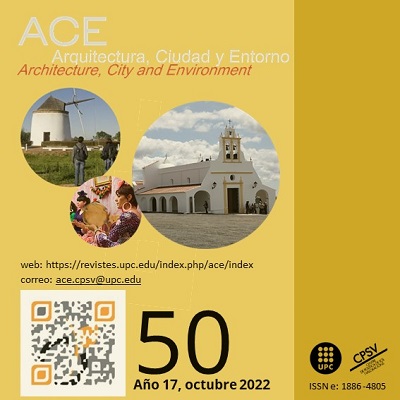Vernacular Architecture and Cultural Identity in Shrinking Rural Settlements
DOI:
https://doi.org/10.5821/ace.17.50.11389Keywords:
Shrinking, rural settlements, vernacular architecture, conservation, valorisationAbstract
The depopulation and abandonment of rural areas is a phenomenon that is repeated on a global scale and is transversal to most territories and cultures. This shrinking process particularly affects vernacular architecture, due to its modest materiality and therefore the cultural values that reside in it, both of a material and immaterial nature. This work analyses the situation of rural vernacular architecture in shrinking areas in three regions of different scales and cultural approaches as the southern areas of China, Morocco and Spain, taking as reference typological elements specific to each region. The research delves into experiences in which the endangered cultural heritage is transformed into a dynamizing force for the territory on which it is based and opens the door to different solutions both for the conservation and valorisation of its own elements and for the resolution of the underlying socio-cultural problems. The research identifies generic and universal aspects of the shrinking process, as well as specific conditions of each of the various study territories. The work found how the cases taken into consideration share some conditions in dealing with the consequences of the shrinkage, such as adaptation difficulties, administrative distance, heritage fragility.
Published
Issue
Section
License
| INTELECTUAL PROTECTION CRITERIA |
At this moment, it is count with the "Oficina Española de Patentes y Marcas", while global protection it is being processed by the World Intelectual Property Organization (OMPI/WIPO). Nevertheless the International Standard Serial Number Office (ISSN) has given the following numbers ISSN: 1886-4805 (electronic version) and 1887-7052 (paper version). All articles will be peer reviewed, using double blind reviewing. |
| COPYRIGHT |
The article contents and their comments are authors exclusive liability, and do not reflect necessarily the journal editor commitee's opinion. All ACE published works are subject to the following licence CC BY-NC-ND 3.0 ES http://creativecommons.org/licenses/by-nc-nd/3.0/es/ It implies that authors do not hold nor retain the copyright without restrictions but only those included in the licence. |


































